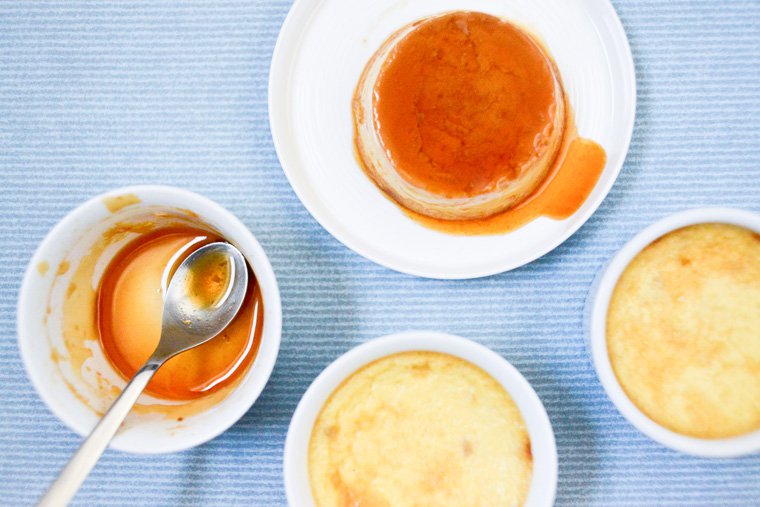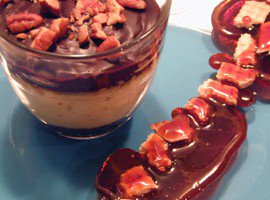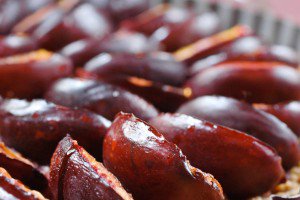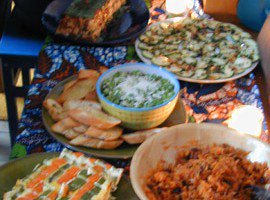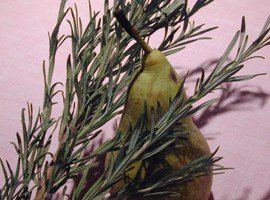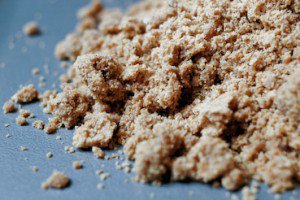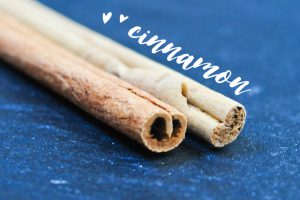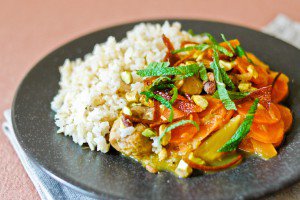Caramel custard was a mainstay of my mother’s dessert repertoire when I was growing up. We referred to it by its common French name crème renversée — flipped custard — because of the way you serve it, upside down: this way the layer of caramel that was spread across the bottom of the pan finds itself on top, and the delicious sauce can run down the sides and pool onto the serving plate.
The layer of caramel that was spread across the bottom of the pan finds itself on top, and the delicious sauce can run down the sides and pool onto the serving plate.
I am so partial to my mother’s recipe that I never ever order crème caramel when dining out, because I know it will fall short. Her version isn’t overly sweet, and it has the simple flavors of childhood — milk, eggs, vanilla. The silken, slippery consistency feels fresh and clean, though my favorite part is actually the lightly nubby “skin” that develops at the surface of the custard, where it was exposed to the oven’s heat.
Since the ingredients list is so straightforward, use the best ones you can: now would be a fine time to use your neighbor’s backyard eggs, that farm-fresh milk you get from the greenmarket, and the fat, waxy vanilla bean you’ve been saving for a special occasion.
My mother makes crème caramel in a single pan — a repurposed charlotte mold if you must know — for the whole family to share, but I usually cook it in ramekins instead: individual containers look fancier when we have guests, and if it’s just us, they make it easier to handle servings and leftovers.
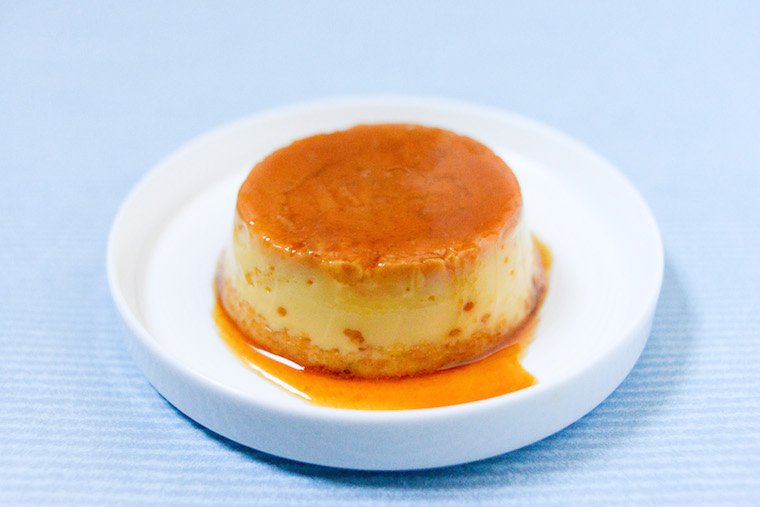

Have you tried this? Share your pics on Instagram!
Please tag your pictures with #cnzrecipes. I'll share my favorites!
Ingredients
- 100 grams (1/2 cup) white sugar (see note)
- 1 tablespoon water
- 650 ml (2 3/4 cups) milk (I use fresh lait demi-écrémé -- 2% milk -- but you can also use whole milk or non-dairy milk; I wouldn't recommend skim)
- 50 grams (1/4 cup) unrefined blond cane sugar (you can use the unrefined sugar of your choice, just keep in mind that a darker sugar will make the custard a bit brown)
- 1 fresh vanilla bean, split open and beans scraped, or 1 tablespoon homemade vanilla extract, or 1 teaspoon store-bought natural vanilla extract
- 4 large organic eggs
Instructions
- Have ready 6 ovenproof ramekins or cups, each about 160 ml (2/3 cup) in capacity.
- First, make the caramel. Combine the 100 grams (1/2 cup) sugar and the water in a large saucepan. Turn the heat to medium and let the sugar melt without stirring, simply swirling the pan around from time to time so it caramelizes evenly.
- As it boils, the caramel will turn golden, then golden brown, and when it darkens to a deep amber, remove from the heat and immediately pour into the prepared ramekins, swirling around to coat the bottoms evenly.
- Place the ramekins on a deep rimmed baking sheet, or a baking dish large enough to accommodate them comfortably.
- Preheat the oven to 150°C (300°F) and bring water to a boil in the kettle.
- Make the custard. In a medium saucepan, combine the milk, sugar, and vanilla, and bring to just under a simmer over medium heat, stirring frequently to prevent scorching. Let cool slightly.
- In a medium mixing bowl with a pouring spout, beat the eggs lightly. Set a fine-mesh sieve over the bowl, and pour in a quarter of the milk, then whisk to combine. Repeat with the remaining milk in three additions.
- Pour the custard into the prepared ramekins.
- Pour very hot water from the kettle into the rimmed baking sheet and around the ramekins to about half their height -- this will help conduct the heat evenly.
- Insert into the oven, lower the heat to 120°C (250°F) and cook for 30 minutes, until the custards are set but still jiggly, and the blade of a knife inserted in the center comes out clean.
- Turn off the oven and leave the ramekins in for another 30 minutes. Transfer to a rack to cool completely, then refrigerate for 3 hours or overnight before serving.
- To serve, run a knife carefully around the custard to loosen, place a small serving plate over the ramekin, and flip to unmold, shaking a bit as needed.
Notes
I use unrefined cane sugar in practically all my recipes, but it doesn't caramelize well due to the impurities, so I revert to regular white sugar when making caramel.


